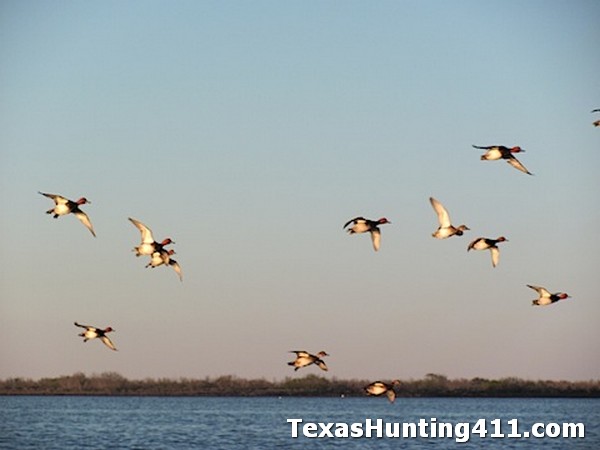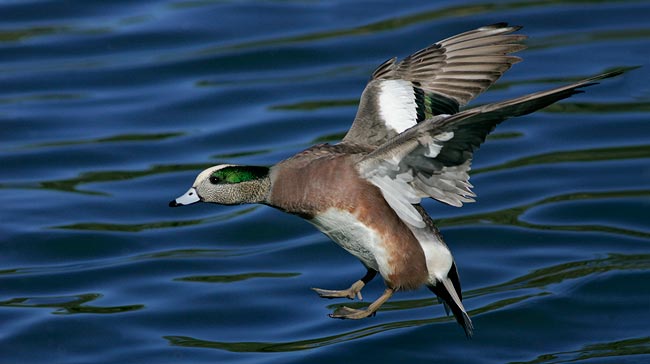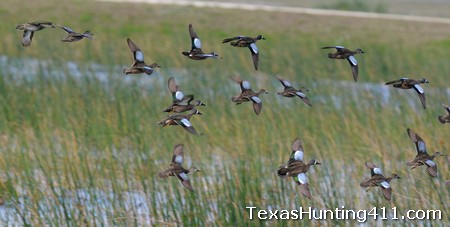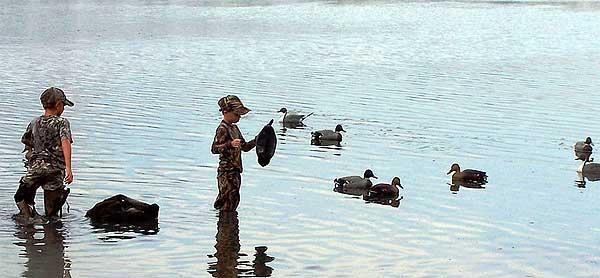Good nesting conditions bode well for the upcoming duck and goose hunting seasons in Texas and the rest of the Central Flyway. All reports indicate that a large, fresh crop of ducks will be migrating south this fall. In preparation for what is shaping up to be an amazing year for duck hunting in particular, the Texas Parks and Wildlife Commission has approved the 2015-16 waterfowl seasons for Texas. Texas should have increased surface water for incoming record populations of wintering waterfowl.
Good news of record-setting waterfowl populations, with nearly all species numbering above the long term goals identified in the North American Waterfowl Management Plan, sets the table for the 2015-16 hunting season in Texas. Most species of ducks important to Texas waterfowlers are well above long term averages, with mallards and green-winged teal reaching new all-time highs.

A staggered hunting season openers this fall in the North and South Zones along with a concurrent split will allow duck hunters who wish to hunt across zones in essence an additional two weeks of opportunity. The only change to the daily bag limit on ducks this season is an increase to two canvasbacks.
Changes to this season’s goose regulations include an increase in the number of goose hunting days for white-fronted geese in the Eastern Zone from 72 to 86, with those additional days added to the end of the season framework. Also, the bag limit for Canada geese in the Eastern Zone increases this season from three to five daily, including during the early Canada goose season. The daily aggregate bag limit of no more than two white-fronted geese remains in effect. In the Western Zone, the daily bag limit on white-fronted geese also increases this season to two.
Following are the adopted duck hunting, goose hunting and sandhill crane hunting seasons dates and limits for the 2015-16 migratory game bird seasons:
Texas Duck Hunting Seasons 2015-16
- High Plains Mallard Management Unit: Youth: Oct. 24-25; Regular: Oct. 31 — Nov. 1 and Nov. 6 — Jan. 31; “Dusky” Duck: Nov. 9 — Jan. 31.
- North Zone: Youth: Oct. 31 – Nov. 1; Regular: Nov. 7-29 and Dec. 12 — Jan. 31; “Dusky” Duck: Nov. 12-29 and Dec. 12 — Jan. 31.
- South Zone: Youth: Oct. 24-25; Regular: Oct. 31 – Nov. 29 and Dec. 12 — Jan. 24; “Dusky” Duck: Nov. 5-29 and Dec. 12 — Jan. 24.
- Bag Limit: 6/day in the aggregate to include no more than 3 wood ducks, 3 scaup, 5 mallards, of which only 2 may be hens, 2 redheads, 2 pintail , 2 canvasback, 1 “dusky duck” (mottled, black or Mexican-like) after the first 5 days. Mergansers: 5/day with no more than 2 hooded merganser. Coots: 15/day. Possession limit is three times the daily bag limit.
Texas Goose Hunting Seasons 2015-16
- East Zone: Nov. 7 — Jan. 31; Light Geese Conservation Order Feb. 1 — Mar. 20.
- Bag Limit: 5 dark geese, to include no more than 2 white-fronted geese, 20 light geese (no possession limit).
- West Zone: Oct. 31 — Jan. 31; Light Geese Conservation Order Feb. 1 — Mar. 20.
- Bag Limit: 5 dark geese, to include no more than 2 white-fronted geese, 20 light geese (no possession limit).
Sandhill Crane Hunting Seasons 2015-16
- Zone A: Oct. 31 – Jan. 31.Bag Limit: 3.
- Zone B: Nov. 20 — Jan. 31. Bag Limit: 3.
- Zone C: Dec. 19 — Jan. 24. Bag Limit: 2.




